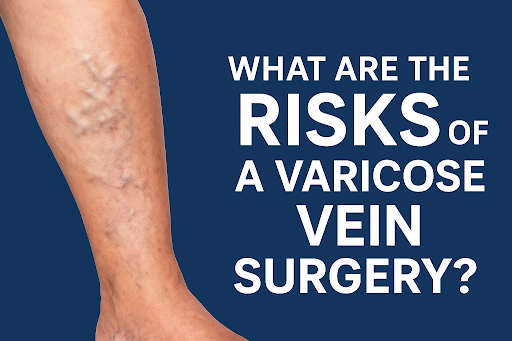Varicose veins are a common condition that affects millions of people worldwide. Characterized by enlarged, twisted veins that often appear on the legs and feet, they can be both a cosmetic concern and a source of discomfort. Understanding the type of varicose veins you have is crucial for managing symptoms and seeking the appropriate treatment. In this article, we will explore the different types of varicose veins, their causes, symptoms, and potential treatments.
Understanding Varicose Veins
Varicose veins occur when the valves in the veins that help regulate blood flow become weak or damaged. This leads to blood pooling in the veins, causing them to enlarge and become twisted. While any vein can become varicose, the veins most commonly affected are those in the legs and feet, due to the increased pressure of standing and walking.
Types of Varicose Veins
There are several types of varicose veins, each with distinct characteristics and implications for treatment:
- Trunk Varicose Veins
- Description: These are the most noticeable type of varicose veins, often appearing as large, bulging, and twisted veins that are visible just beneath the skin’s surface. They typically occur in the legs and are the result of significant venous insufficiency.
- Symptoms: Trunk varicose veins can cause aching, heaviness, and discomfort in the affected area, particularly after long periods of standing or sitting. They can also lead to more serious complications, such as skin ulcers or blood clots, if left untreated.
- Treatment: Treatment options for trunk varicose veins include lifestyle changes, compression stockings, sclerotherapy, laser treatments, and surgical interventions like vein stripping or endovenous laser therapy (EVLT).
- Reticular Varicose Veins
- Description: Reticular veins are smaller than trunk varicose veins and are often less prominent. They appear as blue or greenish veins under the skin, usually in clusters. Reticular veins are usually found on the thighs, knees, and ankles.
- Symptoms: While reticular veins are less likely to cause significant pain, they can be associated with mild discomfort, itching, or a burning sensation in the affected area. They may also be linked to the development of spider veins.
- Treatment: Reticular veins can be treated with similar methods to trunk varicose veins, such as sclerotherapy or laser treatments. Compression stockings may also help alleviate symptoms and prevent progression.
- Spider Veins (Telangiectasias)
- Description: Spider veins are the smallest type of varicose veins, appearing as thin, web-like red, blue, or purple lines on the surface of the skin. They are typically found on the face, thighs, and legs. Spider veins are usually a cosmetic concern rather than a medical one.
- Symptoms: Spider veins rarely cause discomfort or pain, but they can be unsightly and may cause self-consciousness in some individuals. In some cases, they may indicate underlying venous insufficiency.
- Treatment: Spider veins are often treated with sclerotherapy or laser therapy, both of which can effectively reduce or eliminate their appearance. These treatments are typically performed in a dermatologist’s office and require minimal downtime.
- Varicose Ulcers
- Description: Varicose ulcers are a severe complication of untreated varicose veins. They are open sores that develop on the skin, usually near the ankle, due to prolonged venous insufficiency. Varicose ulcers can be challenging to treat and may recur if the underlying venous issue is not addressed.
- Symptoms: Symptoms of varicose ulcers include persistent pain, swelling, and discharge from the sore. The surrounding skin may also become discolored or hardened.
- Treatment: Treating varicose ulcers involves addressing both the ulcer itself and the underlying venous insufficiency. This may include wound care, compression therapy, and surgical options to improve venous circulation.
Causes and Risk Factors
Several factors contribute to the development of varicose veins, including:
- Age: As you age, your veins lose elasticity, and the valves in your veins may weaken, leading to varicose veins.
- Gender: Women are more likely to develop varicose veins, partly due to hormonal changes during pregnancy, menstruation, and menopause.
- Genetics: If you have a family history of varicose veins, you are more likely to develop them.
- Obesity: Excess weight increases pressure on your veins, particularly in the lower body, contributing to varicose veins.
- Prolonged Standing or Sitting: Occupations that require long periods of standing or sitting can increase your risk of developing varicose veins.
- Pregnancy: Pregnancy increases blood volume and pressure on the veins in the legs, leading to varicose veins.
Diagnosis and When to Seek Treatment
If you suspect you have varicose veins, it’s essential to consult with a healthcare provider for an accurate diagnosis. A physical examination and possibly an ultrasound will be conducted to assess the severity of the condition and determine the most appropriate treatment options.
You should seek treatment if you experience any of the following:
- Pain, aching, or heaviness in the legs
- Swelling in the legs or ankles
- Skin changes or ulcers near the ankles
- Bleeding from varicose veins
- Signs of infection, such as redness, warmth, or pus
Conclusion
Varicose veins are a common condition with various types that range from mild cosmetic concerns to more serious medical issues. Understanding the type of varicose veins you have is the first step in managing your symptoms and finding the most effective treatment. Whether you’re dealing with trunk varicose veins, reticular veins, spider veins, or varicose ulcers, there are treatment options available that can help improve your quality of life.
If you suspect you have varicose veins, don’t hesitate to consult with a healthcare professional to discuss your symptoms and explore the best course of action. Early intervention can prevent complications and help you maintain healthy, comfortable legs.








